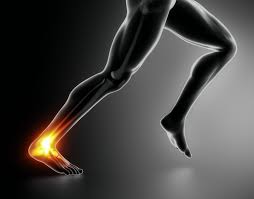
Running season is well and truly underway! With so many fun-runs, half marathons and marathons going on at the moment, we’re seeing a lot of clients come into the clinic with niggling injuries holding them back, be it in training, competing or just participating! The most common of these injuries is an Achilles tendinopathy (previously known as Achilles tendinitis), which occurs when the Achilles tendon is unable to adapt to an increase of strain being placed on it, leading to small amounts of damage within the tendon fibres themselves. This increase in strain commonly comes about in runners who have suddenly increased the distance they’re running, the amount of hill running they’re completing or the intensity they’re running at!
So, what can you do to help heal an Achilles tendinopathy? Here at Central Performance we love taking an active approach, believing that combining specific exercises with appropriate Physiotherapy techniques is the best treatment possible.
So, what exercises should you be doing? A loaded calf raise program is your best chance at getting back on track. It’s important to remember that initially, these exercises will likely increase your pain, but don’t worry, that soon settles!
Your initial loaded calf raise program should include:
- Straight knee heel lowers: Using a wall for support, raise up onto your toes using your good leg, taking 3 seconds. Transfer your weight to your bad leg, then lower your heels to the floor, taking 4 seconds. When this starts to become easy, switch to single leg straight knee heel lowers.
- Bent knee heel lowers: Using a wall for support, raise up onto your toes using your good leg, taking 3 seconds. Transfer your weight to your bad leg, and keeping your knee bent, lower your heels to the floor, taking 4 seconds. Again, when this starts to become easy, switch to single leg bent knee heel lowers.
For all these exercises, aim for 3 sets of 15 reps on alternating days. As their difficulty decreases, weight can be added to each of them to further progress the strengthening side of the rehab process.
We recommend following this program for at least 8-12 weeks, progressing from 15 reps max to 6 reps max towards the end of the program. You can still continue to run throughout this time, as long as your pain levels don’t exceed a 3/10 and your pain subsides following the run.
The final phase of your journey to full recovery incorporates ballistics and advanced strengthening exercises. Exercises based around advanced sport-specific strengthening and high- speed movements, combined with rapid change of direction drills are essential for getting you back to full fitness and preventing a recurrence of the injury!
Many clients find that seeing one of our Exercise Physiologists or Strength & Conditioning coach is a great way to build strength, ability & confidence for a smooth return to full sporting activity.

